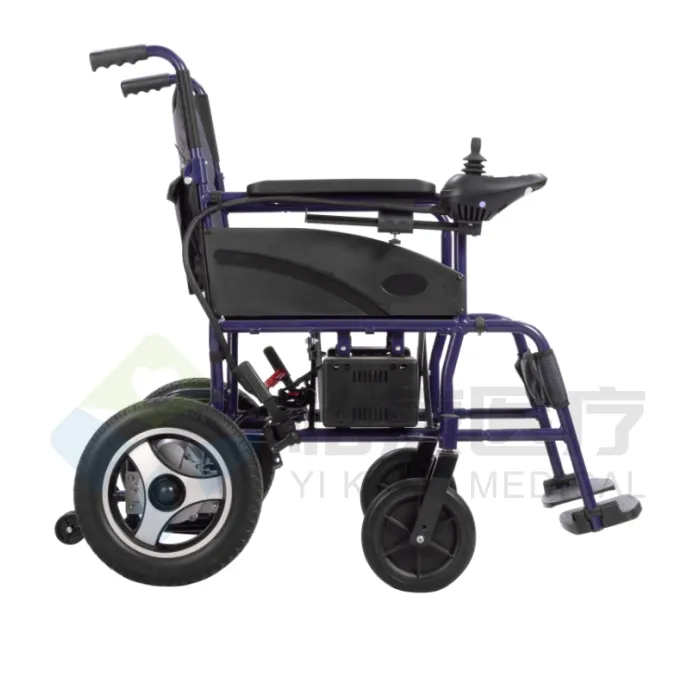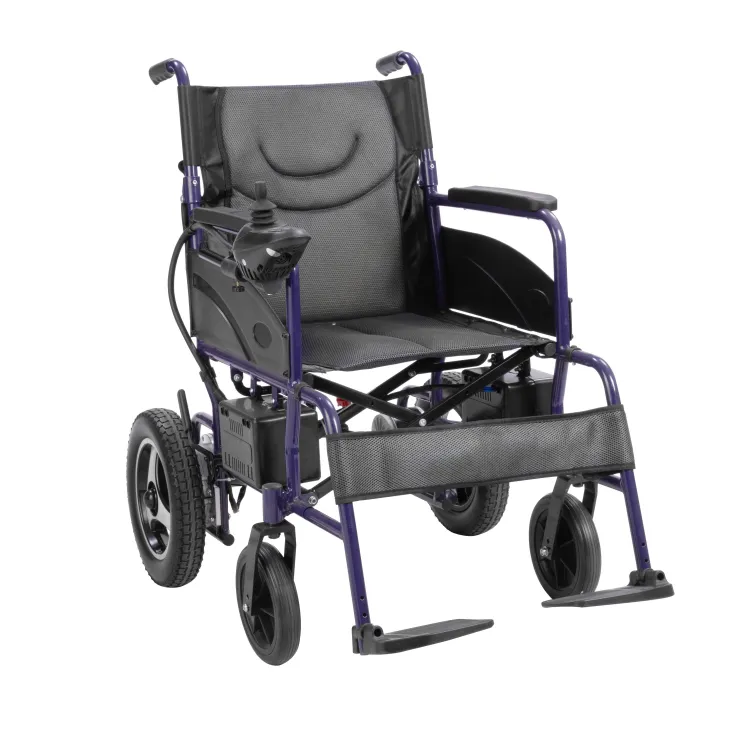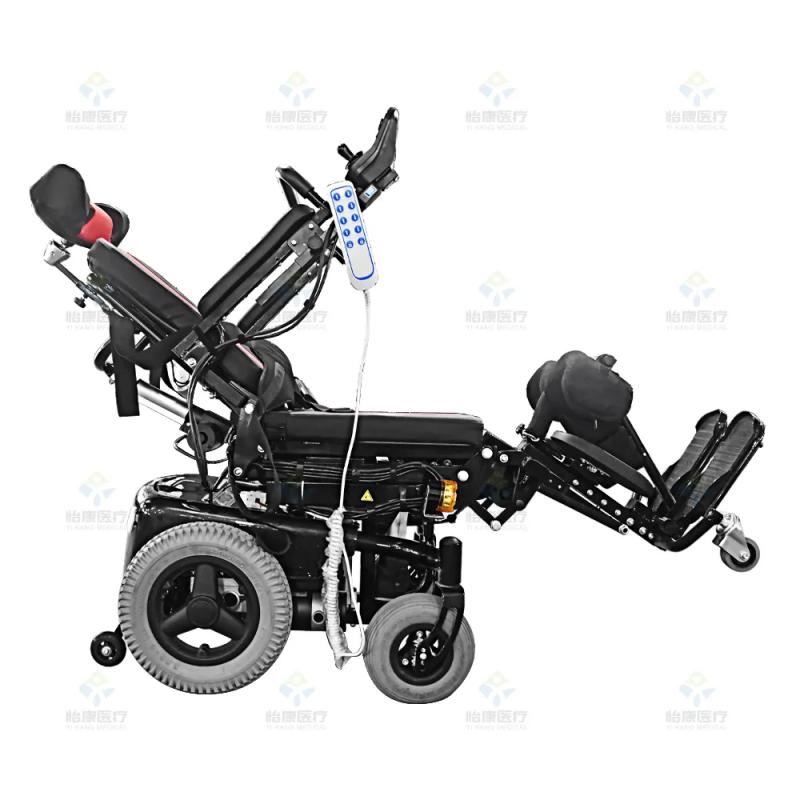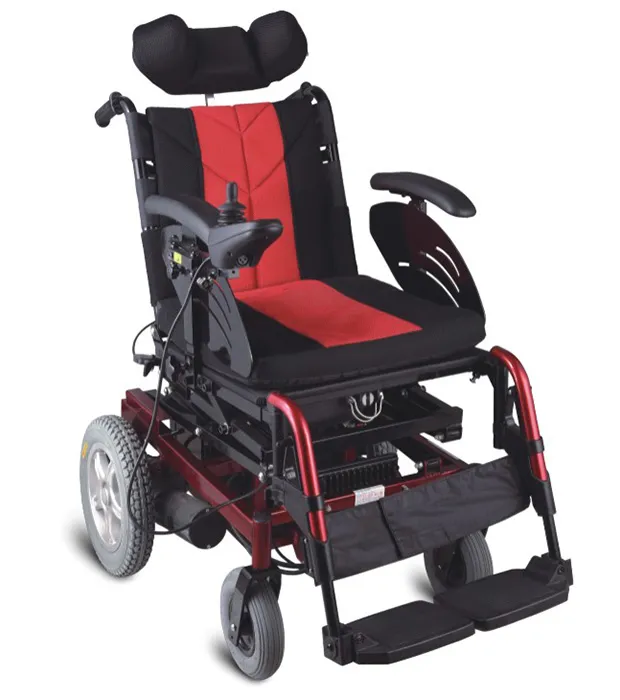As an important member of modern rehabilitation assistive devices, electric wheel chairs rely on batteries as the core energy source of driving force, providing mobility autonomy and convenience for people with limited mobility. However, in daily use, the problem of "electric wheel chairs cannot be charged" frequently occurs, causing widespread concern and anxiety among the user group.
The inability of electric wheel chairs to be charged is not caused by a single factor, it involves multiple technical aspects such as battery system, charger, internal circuit, use environment, operating habits, etc.
This article will conduct a systematic and professional analysis around the core question of "Why can't electric wheel chairs be charged?" to help users and technicians fully understand the root cause of the problem, thereby improving the level of awareness and response capabilities of electric wheel chairs products.

Basic charging structure of electric wheel chairs
To understand why electric wheel chairs cannot be charged, you must first understand the basic structure of their charging system. Standard electric wheel chairs are usually composed of the following core components:
1. Battery pack
The battery is the core storage device of electric wheel chairs. At present, mainstream electric wheel chairs use lead-acid batteries or lithium batteries, with different performance characteristics.
● Lead-acid battery: low cost, strong durability, but large size, heavy weight, long charging cycle;
● Lithium battery: small size, high energy density, long cycle life, but relatively high price, higher requirements for charging system stability.
2. Charger
The charger is an electric energy conversion device used to convert AC power into DC power suitable for battery absorption. It usually has a dedicated model and must match the battery voltage and current specifications.
3. Controller and charging interface
The controller is not only used for driving control, but also manages the battery charging and discharging process, which plays a key role in charging safety, efficiency and stability. The charging interface is the physical port where the user inserts the charger, which may have problems such as poor contact after long-term use.

Common technical reasons why electric wheel chairs cannot be charged
When electric wheel chairs cannot be charged, the above key components must be checked one by one. The following are the most common technical reasons:
1. Battery aging or damage
Batteries are one of the most common sources of failure, especially in electric wheel chairs that have been used for more than one year. Battery aging may cause the following phenomena:
● Unable to charge: The chemical reaction inside the battery is unbalanced and the electrode plate is sulfided;
● Virtual power state: It shows full, but the discharge is abnormally fast;
● Over-discharge protection: Some lithium batteries start the protection mechanism after the voltage is too low, preventing further charging;
● Short circuit or open circuit: The battery cell is damaged, and the internal short circuit or open circuit makes it impossible to conduct electricity.
If the electric wheel chair cannot be charged after not being used for a long time, it is very likely that the battery has entered a deep discharge state and can no longer be awakened.
2. Charger failure
As an essential component in the charging process of electric wheel chairs, the failure of the charger can also cause the phenomenon of failure to charge. Common problems include:
● Fuse blown: internal protection mechanism activated;
● Power module damaged: voltage stabilization circuit, inductor, capacitor aging;
● Abnormal output voltage: voltage too high or too low will cause the wheelchair controller to refuse to accept power input;
● Damaged or loose charging head: long-term plugging and unplugging makes the plug poorly contacted;
● Compatibility issues: using non-original or power-incompatible chargers may cause charging failure or damage the device.
3. Loose or rusted charging interface
The charging interface of electric wheel chairs is usually located next to the controller or on the battery box. Long-term exposure to air may cause:
● Metal oxidation: formation of an oxide layer, affecting conductivity;
● Mechanical looseness: the connector cannot be tightly connected, resulting in intermittent power outages;
● Deformation or aging of the socket plastic: resulting in the inability to firmly connect the plug.
Such problems are visible to the naked eye, but are easily overlooked. They are the more common and easily repaired parts of electric wheel chair charging failures.
4. Controller failure causes interruption of charging path
The controller of electric wheel chairs is not only responsible for driving control, but also manages the battery charging process. If the controller has an internal fault, it may cause:
● Abnormal voltage detection: incorrect judgment that the battery is full;
● Refusal to charge: due to protection mechanism or system error;
● Internal short circuit or circuit board failure: interference with normal charging channel.
This situation is usually more complicated and requires professionals to use diagnostic equipment for detection.
5. Safety protection mechanism limits charging
Some smart electric wheel chairs have multiple safety mechanisms, such as:
● Overheat protection: automatic disconnection of charging when the battery or controller temperature is too high;
● Abnormal current identification: refusal to charge when abnormal current is input;
● Wrong insertion direction detection: charging is prohibited when the charger is not correctly connected.
This type of protection mechanism is to prevent accidents such as battery fire and explosion, but in the case of misjudgment, it will also lead to failure to charge normally.

Interference of environmental factors on the charging process of electric wheel chairs
In addition to problems with the equipment itself, changes in the use environment will also have an adverse effect on the charging of electric wheel chairs.
1. Power stability problem
The charger of electric wheel chairs has high voltage requirements. If the user's environment has the following problems, the charging program cannot be started:
● Voltage is too low (such as in rural areas and old communities);
● Voltage is unstable (serious fluctuations in the mains power);
● Power frequently trips;
● Socket grounding problem.
2. Poor contact caused by humid environment
Storing electric wheel chairs in humid weather or near the bathroom may cause:
● Interface oxidation;
● Water ingress into the socket;
● Water ingress into the controller.
A humid environment is extremely unfavorable to the electrical system of electric wheel chairs, often causing micro-short circuits, which leads to "unable to charge".
Differences in design types and charging methods of electric wheel chairs
Electric wheel chairs of different brands and structures have significant differences in the design of charging methods, which will also affect the judgment criteria of "not charging".
1. Built-in battery and external battery
● Built-in battery type electric wheel chairs: The battery is integrated inside the vehicle body, and the whole vehicle needs to be close to a power source for charging;
● External detachable battery type electric wheel chairs: Users can remove the battery and charge it separately.
If the battery is not properly installed back into the vehicle body and the interface is not plugged in tightly, the electric wheel chair will not be able to recognize the battery and cannot be charged.
2. Single battery and dual battery switching system
Some electric wheel chairs are equipped with a dual battery system with automatic battery switching function. Once the switching module fails, the charger may not be able to recognize the current battery.
3. Smart wheelchair software setting problem
For electric wheel chairs with intelligent management systems, such as models operated via Bluetooth, Wi-Fi or LCD screen, if the software version is abnormal or the settings are changed by mistake, the charging function may also fail.

Electric wheel chair usage habits and human operation errors
Improper user operation is also one of the important factors leading to charging failure, especially when using electric wheel chairs for the first time or changing to a new charger.
1. Improper plug-in sequence
Some electric wheel chairs models require a strict plug-in sequence (first plug in the charger and then the power supply), otherwise the electric control board will make a wrong judgment and refuse to start the charging process.
2. Frequent power outages or interrupted charging
Frequently disconnecting the charger when it is not fully charged will affect the battery charging memory, especially for lithium batteries, which may cause the system to misjudge and refuse to start charging again.
3. Using a third-party charger
Using a charger that is not original and does not match the voltage/current specifications may burn out the battery protection board or controller, causing permanent damage.
How reliable is your production capacity for large orders?
As a professional manufacturer, we have a robust production facility that ensures efficient processing of large orders. Yikang Medical's factory is capable of handling high-volume orders while maintaining strict quality control. We offer competitive pricing, fast lead times, and the ability to customize products to meet specific requirements. Whether you need a few units or bulk quantities, our factory ensures that your order will be completed on time and to the highest standards.

